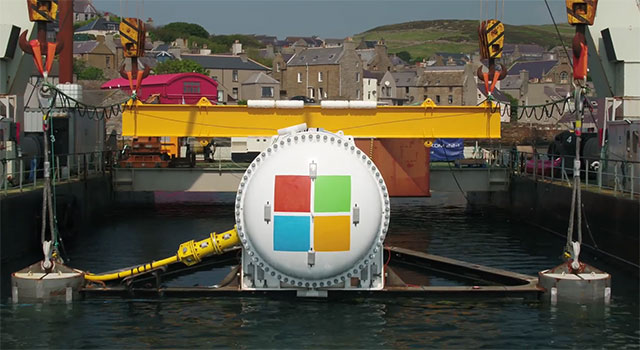Microsoft stopped testing placing data centers on the ocean floor
In 2016, Microsoft announced an experiment called Project Natick, mainly to research whether data centers could be installed and run on the seabed. After several small-scale test runs, the company installed a complete data center called Northern Isles, with a scale of up to 864 servers, at a depth of more than 35m off the coast of Scotland at the beginning of the year. 2018.
By 2020, Microsoft for the first time revealed the results of the largest test run of the Project Natick project. The company confirms the theory that placing a data center deep under water significantly limits cooling problems compared to land, thereby significantly limiting hardware failures. Exactly.
Indeed, Microsoft claims that underwater servers experience only one-eighth the number of device failures compared to land-based data centers. Furthermore, underwater servers can be set up and installed in just 90 days, which is much less than the estimated two years it takes to fully build a data center. materials on land.

However, despite those positive benefits, Microsoft has just quietly confirmed that it has ended its underwater data center testing program. According to the Data Center Dynamics website, Noelle Walsh, head of Microsoft's Cloud Operations + Innovation (CO+I) division, said the Redmond company "no longer plans to build undersea data centers in any region." any other area in the world".
Microsoft also issued its own statement about not continuing to develop underwater data centers in the future:
While we have no current plans to build additional underwater data centers, we will continue to use Project Natick as a research platform to explore, test, and validate new reliability concepts and data center sustainability, such as immersion in liquids.
Microsoft did not specify the reasons for this decision, but it will be interesting to see what the company plans to do next with the lessons learned from the Project Natick experiment, especially since it will likely need to build more more data centers to keep up with the current trend of providing AI services. Microsoft has long focused on developing and operating underwater data centers, with the belief that this is an approach that can help increase performance, reduce costs, protect the environment and make it easier to use. easy to deploy.
 Cyber attacks cause many American businesses to return to using paper
Cyber attacks cause many American businesses to return to using paper Huawei announced the 'Cangjie' programming language developed by the company
Huawei announced the 'Cangjie' programming language developed by the company Adobe will launch more native applications for Windows PCs running Arm chips
Adobe will launch more native applications for Windows PCs running Arm chips 5 best external hard drives of 2024
5 best external hard drives of 2024 How to enable/disable application access to Generative AI in Windows 11
How to enable/disable application access to Generative AI in Windows 11 5 Xbox Series X controllers
5 Xbox Series X controllers